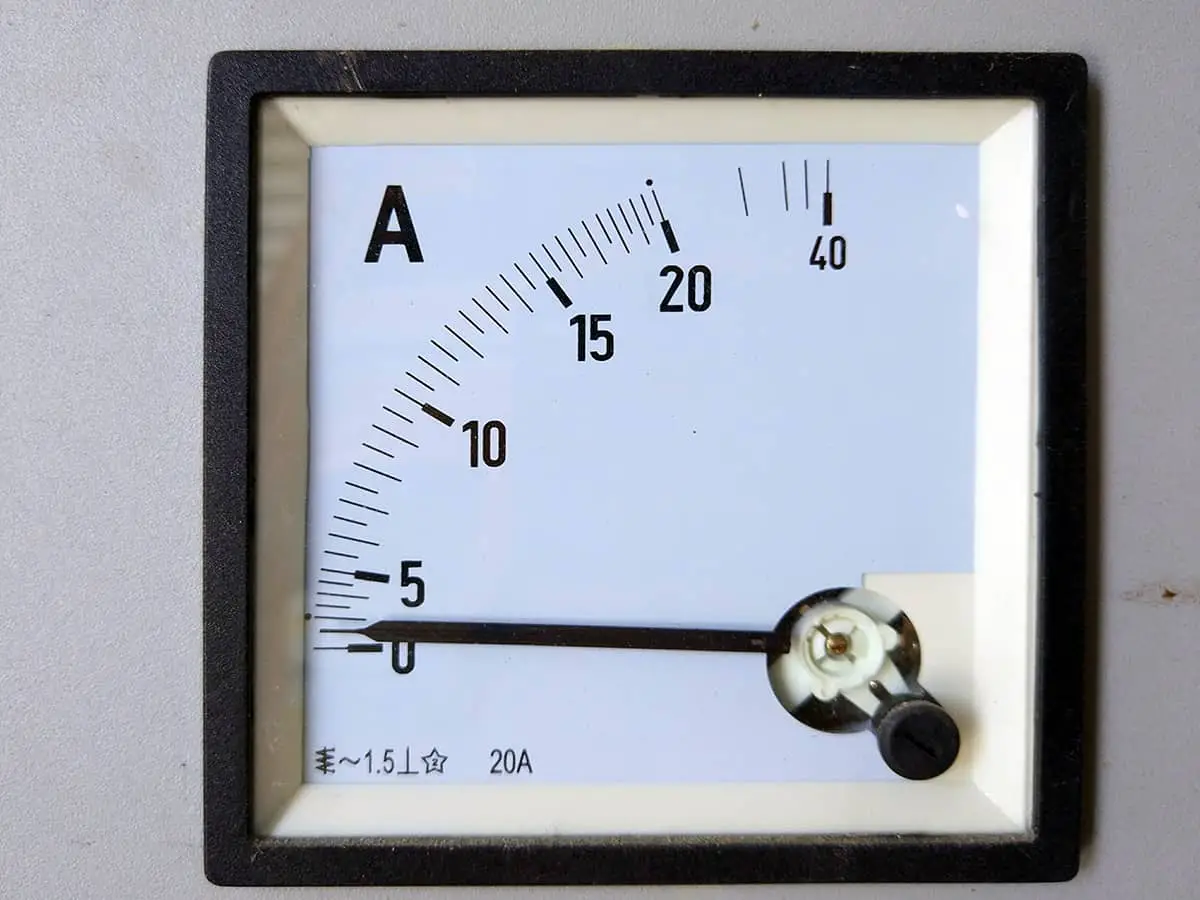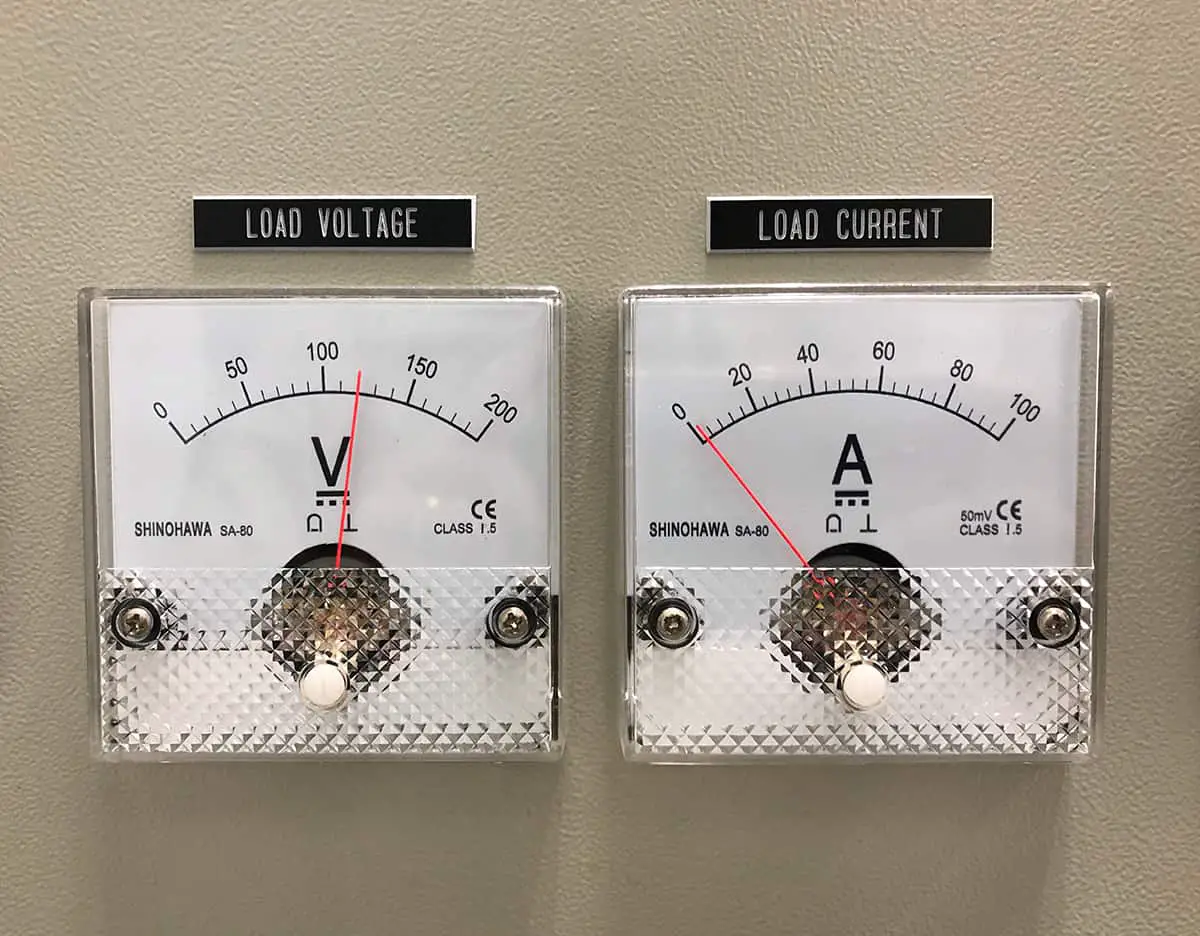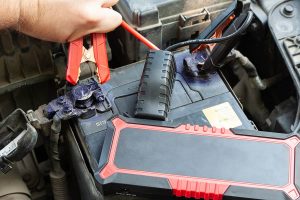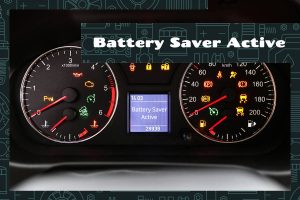Understanding how to read a battery charger amp meter is an essential skill for anyone who uses rechargeable batteries. It helps ensure that your batteries are charged efficiently and safely, while preventing potential issues that could arise from improper charging.
To connect and use a battery charger amp reader, follow these steps:
- Make sure the battery charger is turned off and unplugged.
- Connect the red clamp from the charger to the positive (+) terminal of the battery, which is usually marked with a plus sign.
- Connect the black clamp from the charger to the negative (-) terminal of the battery, which is usually marked with a minus sign.
- Turn on the battery charger and set it to the desired power level.
- Wait for the battery to charge, and keep an eye on the amp reader to make sure the charger is working correctly. The amp reader will show you how much electricity is going into the battery.
- When the battery is fully charged, turn off the charger and disconnect the clamps from the battery.
Throughout this guide, we’ll discuss the basics of battery chargers, the role of amp meters, how to interpret their readings, and troubleshooting tips while charging batteries.
Battery Charger Basics
Understanding the different types of battery chargers and their compatibility with various batteries is crucial for efficient and safe charging. In this section, we’ll explore the common types of chargers and the charging modes they use.
Types of Battery Chargers
Trickle chargers are simple, low-cost chargers that deliver a constant, low current to the battery. They’re great for maintaining a charge over long periods but may take a long time to charge a battery fully.
Smart chargers, also known as intelligent chargers, adjust the charging current and voltage based on the battery’s needs. They can prevent overcharging and charge batteries more quickly than trickle chargers.
Solar chargers use sunlight to generate electricity for charging batteries. They’re eco-friendly and portable, but their charging efficiency depends on the weather and the type of solar panel used.
Industrial chargers are designed for heavy-duty use, charging large batteries or multiple batteries at once. They often have advanced features like temperature monitoring and adjustable charging profiles.
Charger Compatibility
Lead-acid batteries are common in vehicles and other high-power applications. They require chargers that can handle their high voltage and current needs.
Lithium-ion batteries are popular in consumer electronics and electric vehicles. They need chargers with special circuitry to manage their unique charging characteristics, like constant current and constant voltage modes.
NiMH and NiCd batteries are often found in cordless power tools and older electronic devices. They require chargers that can handle their specific voltage and charging requirements.
Understanding Charging Modes
Constant current (CC) mode involves charging the battery with a constant current until it reaches a certain voltage. This mode is typically used in the first stage of charging lithium-ion and NiMH batteries.
Constant voltage (CV) mode maintains a constant voltage while gradually reducing the charging current. This mode is often used in the final stage of charging lithium-ion batteries to prevent overcharging.
Float charging is used with lead-acid batteries to maintain a full charge without overcharging. The charger provides a low, constant voltage, keeping the battery topped up over time.
Amp Meter: What It Measures and Why It Matters

An amp meter is a valuable tool that helps you monitor the charging process and identify potential issues. In this section, we’ll discuss the unit of electric current and why it’s important for charging batteries.
Ampere: The Unit of Electric Current
An ampere, or amp, is the unit used to measure electric current. It shows the flow of electric charge in a circuit. When charging a battery, the amp meter displays the charging current, which is important for understanding the charging progress and efficiency.
The Role of the Amp Meter
The amp meter on a battery charger allows you to track the charging process. By monitoring the charging current, you can determine if the battery is charging properly, if there are any issues, or if the charging is complete. Knowing how to read and interpret the amp meter readings is crucial for maintaining the health and longevity of your batteries.
Reading a Battery Charger Amp Meter
To ensure your batteries charge efficiently and safely, it’s essential to know how to read a battery charger amp meter. In this section, we’ll discuss the different types of meters and how to interpret their readings.
Analog vs. Digital Meters
Analog meters use a needle to indicate the charging current on a scale. They’re simple and affordable, but their readings may not be as precise as digital meters.
Digital meters display the charging current as numerical values on an electronic screen. They offer higher accuracy and are easier to read, but they may be more expensive than analog meters.
Interpreting the Amp Meter Readings
When charging a battery, you’ll notice different stages of the charging current:
- Initial high current—At the beginning of the charging process, the amp meter will show a high current value. This is normal, as the battery requires more current when it’s low on charge.
- Tapering current—As the battery charges, the current will gradually decrease. This is because the battery needs less current as it gets closer to being fully charged.
- Finished charging—When the battery is fully charged, the amp meter will show a very low or zero current value. This indicates that the charging process is complete, and it’s safe to disconnect the charger.
Troubleshooting Common Issues
When charging batteries, you may encounter some issues related to the amp meter readings. In this section, we’ll explore common problems and their solutions.
Fluctuating Amp Readings
If the amp meter readings are constantly changing, it may be due to a loose connection between the charger and the battery. Ensure the battery terminals and charger clamps are clean and securely connected. If the issue persists, the charger or battery could be faulty.
Amp Meter Reading Zero
A zero reading on the amp meter may indicate a problem with the battery connection or the charger itself. Check the connections and ensure the charger is plugged in and powered on. If everything seems fine, the charger might be malfunctioning and need repair or replacement.
Excessively High or Low Amp Readings
Unusually high or low amp readings can signal a mismatch between the charger and the battery, or a damaged or faulty battery. Make sure the charger is compatible with the battery’s voltage and charging requirements. If the readings are still off, the battery might be damaged and need replacement.
FAQs
1. How do I know if my battery charger is working correctly?
To check if your battery charger is working correctly, monitor the amp meter readings during the charging process. The readings should follow the typical pattern of initial high current, tapering current, and low or zero currents when the battery is fully charged. If the readings are unusual or inconsistent, there might be an issue with the charger or the battery.
2. How can I extend the life of my batteries?
To extend the life of your batteries, follow these tips:
- Use a compatible charger with the appropriate voltage and charging mode.
- Avoid overcharging or undercharging your batteries by monitoring the amp meter readings.
- Store batteries in a cool, dry place and avoid extreme temperatures.
- Regularly clean the battery terminals to ensure good connections on the battery terminal.
3. What should I do if my battery charger amp meter isn’t working?
If your battery charger amp meter isn’t working, first check the connections between the charger and the battery. Make sure the charger is plugged in and powered on. If the meter still doesn’t show any readings or displays unusual values, the charger may malfunction.






